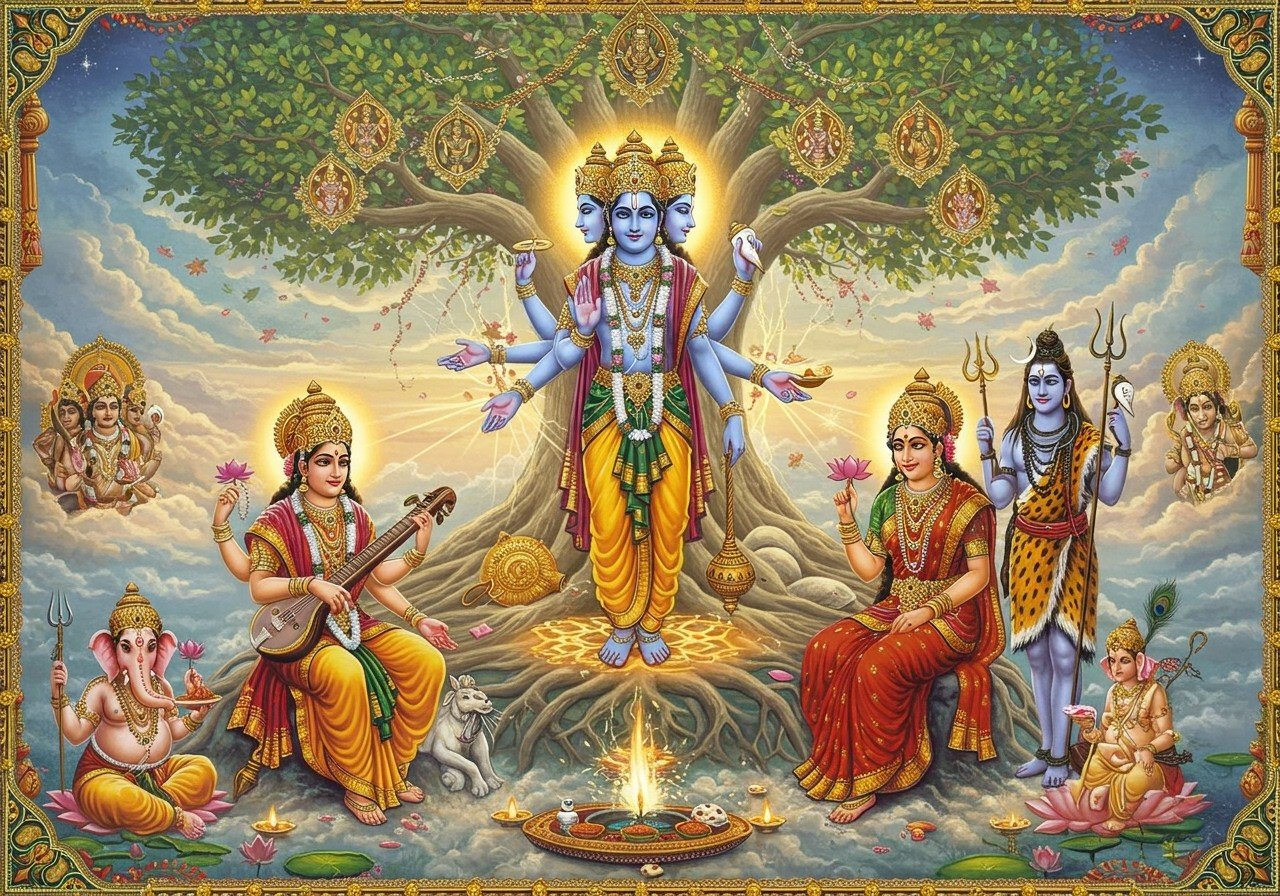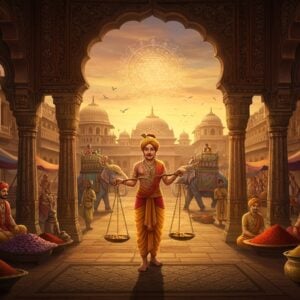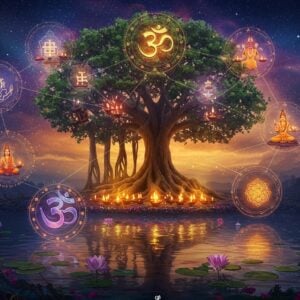
The Hindu pantheon is a vibrant tapestry of gods and goddesses, each with unique stories and symbolism. This divine family tree connects these deities through intricate relationships, offering a deeper understanding of Hindu mythology and spiritual beliefs. Let’s embark on a journey through this fascinating lineage.
The Trimurti and Tridevi: The Divine Trinity and Their Consorts
Central to the Hindu pantheon is the Trimurti, representing the cosmic forces of creation, preservation, and destruction, embodied by Brahma, Vishnu, and Shiva, respectively. Each member of the Trimurti has a consort, forming the Tridevi: Saraswati (wisdom and knowledge), Lakshmi (wealth and prosperity), and Parvati (power and devotion). These goddesses are not merely companions but powerful forces in their own right, shaping the cosmic narrative.
Brahma and Saraswati: The Creators of Knowledge and Arts
Brahma, the creator god, though less prominently worshipped today, holds a crucial position in the Hindu pantheon. His consort, Saraswati, is revered as the goddess of wisdom, knowledge, music, and the arts. Their union symbolizes the creative power of knowledge and the importance of intellectual and artistic pursuits. For all your puja needs related to Brahma and Saraswati, visit poojn.in.
Vishnu and Lakshmi: The Preservers of Order and Abundance
Vishnu, the preserver, is known for his various avatars, including Rama and Krishna, each embodying divine intervention to uphold righteousness. His consort, Lakshmi, embodies wealth, prosperity, and fortune. Together, they represent the forces that maintain balance and harmony in the universe. Find exquisite Vishnu and Lakshmi idols at poojn.in to enhance your home shrine.
Shiva and Parvati: The Transformers of Destruction and Renewal
Shiva, the destroyer, represents the transformative power of destruction, paving the way for renewal and rebirth. Parvati, his consort, known also as Durga and Kali, embodies strength, power, and fierce protection. Their children, Ganesha and Kartikeya, further enrich this divine family, representing wisdom, obstacle removal, and valor. Enhance your devotion with puja items specifically for Shiva, Parvati, Ganesha, and Kartikeya available at poojn.in.
The Goddesses: Embodiments of Shakti
Hinduism celebrates the divine feminine, known as Shakti, through powerful goddesses like Durga, Kali, and Saraswati. These goddesses are not merely consorts but independent forces of energy and power, representing aspects of protection, knowledge, and transformation. Their stories inspire devotees to embrace strength, resilience, and moral integrity. Celebrate these powerful goddesses with authentic puja items available at poojn.in.
Mythological Narratives: Timeless Wisdom and Moral Guidance
Hindu mythology is replete with stories that offer valuable life lessons. The churning of the ocean (Samudra Manthan) teaches the importance of cooperation and collective effort. Ganesha’s creation story emphasizes the power of resourcefulness and overcoming challenges. These narratives continue to shape moral values and inspire devotees across generations.
FAQs about the Hindu Deity Family Tree
What does the Hindu Deity Family Tree represent? The Hindu Deity Family Tree illustrates the relationships between the various Hindu gods and goddesses, offering a framework for understanding their roles within the complex tapestry of Hindu mythology. It is a visual representation of the interconnectedness within the divine realm.
Who are the primary deities in this family tree? The Trimurti—Brahma, Vishnu, and Shiva—and their consorts, Saraswati, Lakshmi, and Parvati, form the core of the Hindu Deity Family Tree. These deities represent the fundamental forces of creation, preservation, destruction, wisdom, prosperity, and power.
How are these deities related? The deities are connected through various familial relationships. Shiva and Parvati, for example, are the parents of Ganesha and Kartikeya. These relationships not only add depth to the narratives but also symbolize the interplay of different cosmic energies.
Why is it important to understand these relationships? Understanding the connections within the Hindu Deity Family Tree provides context for various rituals and practices. It deepens one’s appreciation for the rich symbolism and philosophical concepts embedded within Hindu mythology. This understanding fosters a more meaningful connection with the divine.
Are all Hindu deities included in the Family Tree? Not all deities are directly connected through familial ties. Some deities are worshipped independently but still interact with others within the broader mythological landscape. The family tree focuses primarily on the core deities and their immediate relationships.
Embrace the rich tapestry of Hindu mythology. Explore the divine connections and deepen your spiritual journey. Discover a wide selection of puja items and divine idols at poojn.in.


